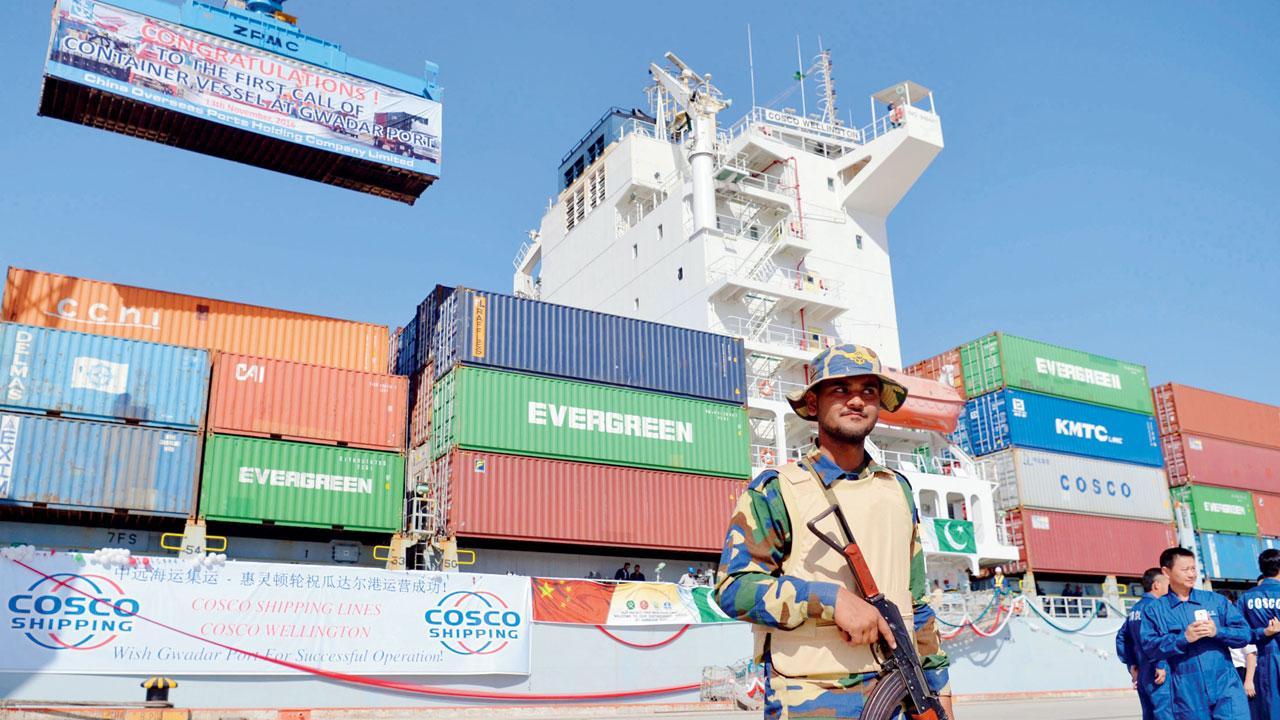The stated goal was to grow trade and the economy by improving China’s connections with the rest of the world in a 21st-century version of the Silk Road trading routes from China to the Middle East and onto Europe

Pakistani Navy personnel stand guard near a ship at Gwadar port which was built by China. Pic/AP
China’s Belt and Road Initiative (BRI) looks to become smaller and greener after a decade of big projects that boosted trade but left big debts and raised environmental concerns. The shift comes as leaders from across the developing world descend on Beijing this week for a government-organised forum.
ADVERTISEMENT
The initiative has built power plants, roads, railroads and ports around the world and deepened China’s relations with Africa, Asia, Latin America and the Mideast. It is a major part of Chinese President Xi Jinping’s push for China to play a larger role in global affairs.
Called “One Belt, One Road” in Chinese, the Belt and Road Initiative started as a program for Chinese companies to build transportation, energy and other infrastructure overseas funded by Chinese development bank loans.
The stated goal was to grow trade and the economy by improving China’s connections with the rest of the world in a 21st-century version of the Silk Road trading routes from China to the Middle East and onto Europe.
Xi unveiled the concept in broad terms on visits to Kazakhstan and Indonesia in 2013 and it took shape in the ensuing years, driving the construction of major projects from railroads in Kenya and Laos to power plants in Pakistan and Indonesia.
This story has been sourced from a third party syndicated feed, agencies. Mid-day accepts no responsibility or liability for its dependability, trustworthiness, reliability and data of the text. Mid-day management/mid-day.com reserves the sole right to alter, delete or remove (without notice) the content in its absolute discretion for any reason whatsoever
 Subscribe today by clicking the link and stay updated with the latest news!" Click here!
Subscribe today by clicking the link and stay updated with the latest news!" Click here!







